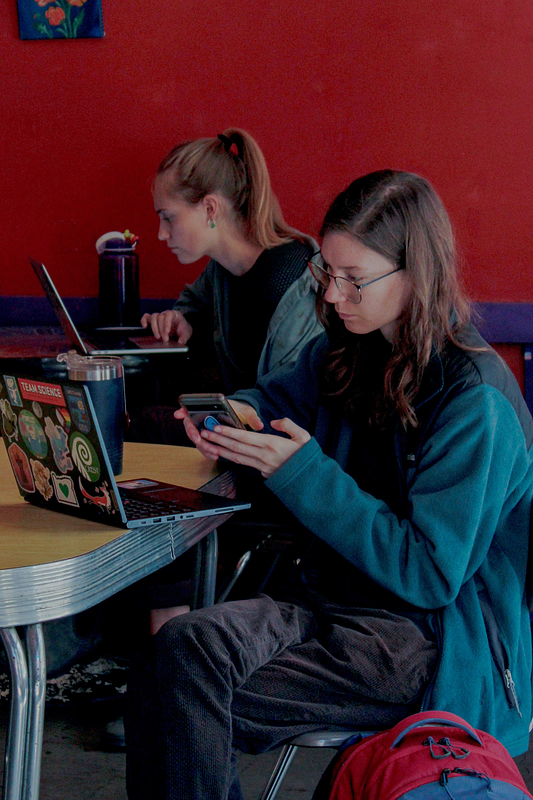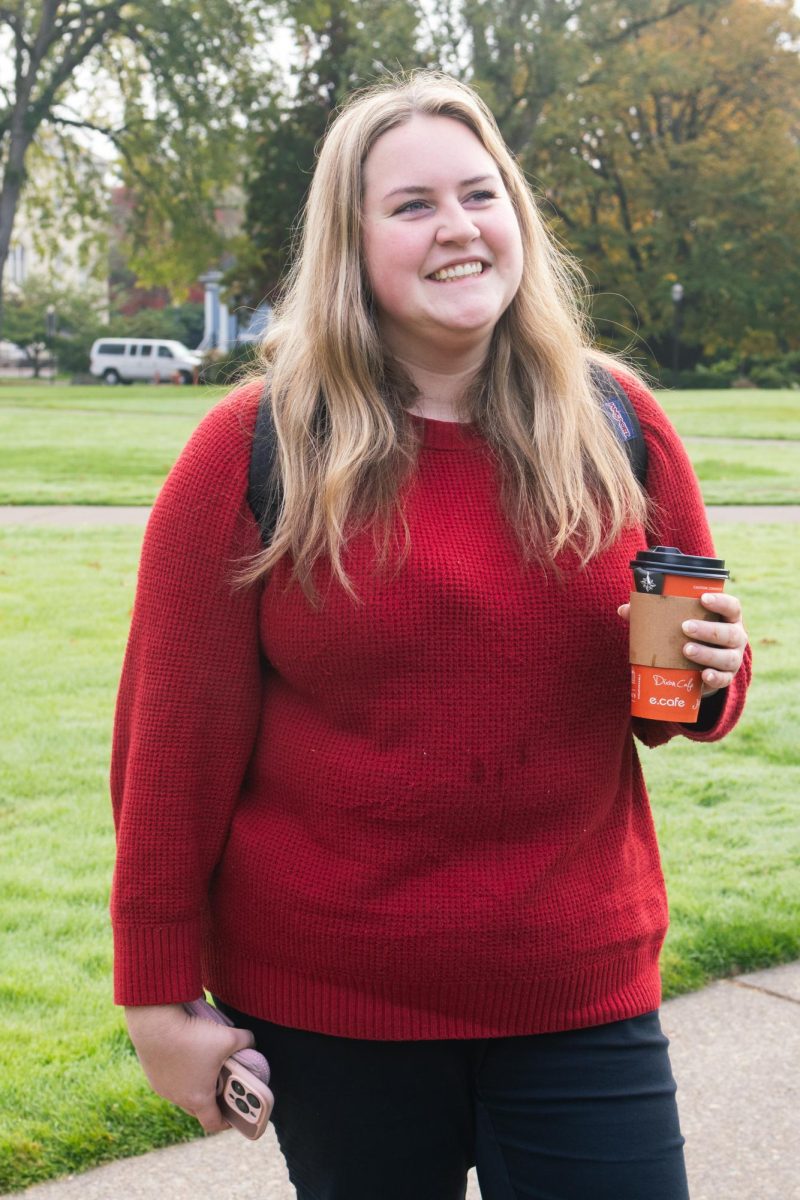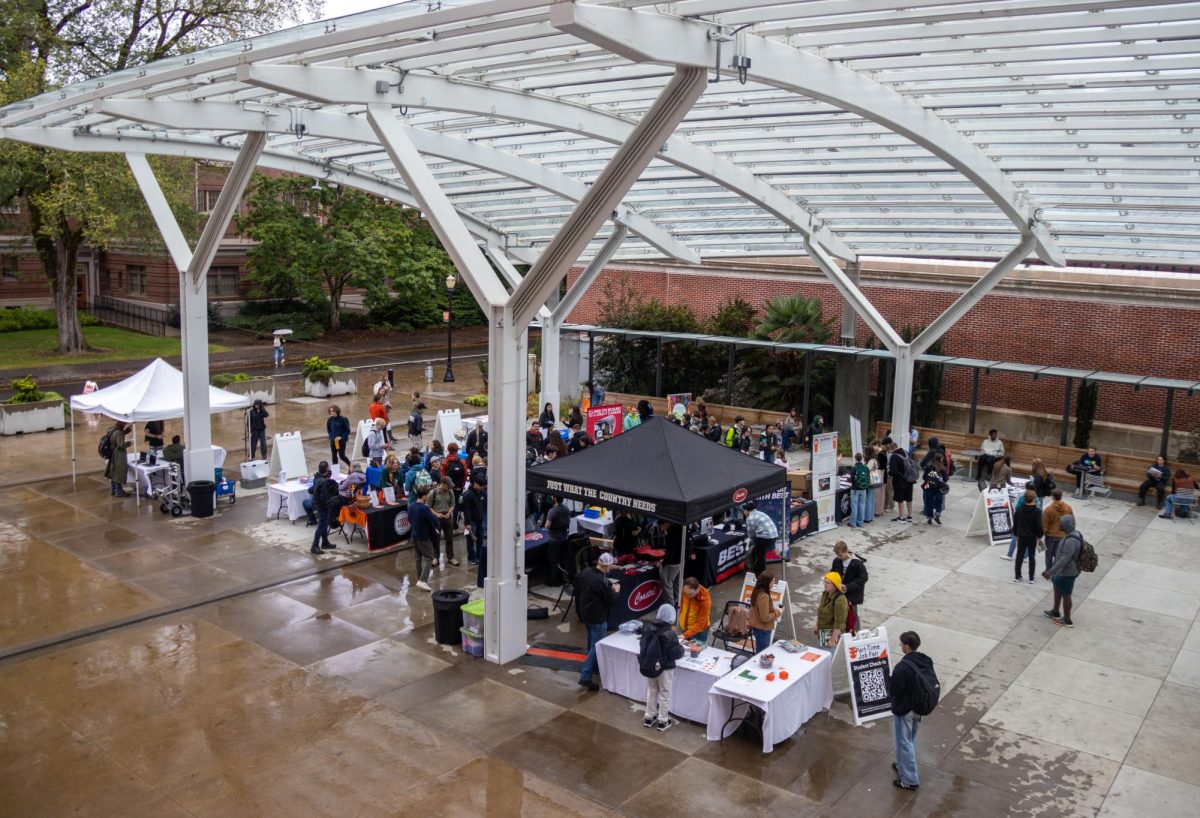Over the summer, a fleet of sit-down scooters and bikes with distinctive blue-green coloring appeared on campus. These rideshare vehicles congregated around bike parking racks and bore the name “Veo” on their sides, eagerly awaiting their usage by students in need of a quick and convenient transportation option to get around campus and the surrounding area.
By the start of the school year, it was clear these new rideshare vehicles were immediately popular. Roughly 1,300 individual trips per day are taken using Veo scooters and bikes, with over 7,000 unique users since their launch on campus, according to Alexis Hadinger, Associated Students of Oregon State University’s Environmental Sustainability Coordinator.
ASOSU brought Veo to campus for a one-year pilot program as part of a micro mobility initiative.
“We want Veo to serve as a reliable transportation solution, helping to reduce (traffic) congestion and promote eco-friendly travel among students and staff,” Hadinger said in an email. “We selected Veo based on their proven track record of successful implementations at various universities like UCLA and Purdue.”
An online survey posted on Reddit created by Oregon State University student Sarah Hoekema, received over 160 responses from students, faculty and Corvallis residents who shared their opinions about Veo.
The reception among students is mixed, with many saying that Veo is a good addition to campus. Positive comments included “(Veo) helps students get around campus and town for things like grocery shopping,” “I can get around faster with my friends,” and “My friend rolled his ankle and he didn’t have to walk back to the dorm.”
Others disagreed. A student wrote, “I already get run over enough by privately owned scooters.” Additionally, a faculty member stated, “They are in my way when I try to park my bike at the bike rack, they are used irresponsibly by the adult-sized children at OSU, and they are not EQUITABLE because poor students cannot afford to use them.”
A Corvallis resident also weighed in, commenting, “Drunk college students with no helmets, haphazardly navigating the city while half paying attention is a recipe for traumatic brain injury. Maybe that’s what it will take to scare some sense into these nincompoops. Also, the fact that they’re just left blocking pedestrian rights of way seems to fly in the face of what these things are supposed to accomplish.”
OSU Public Safety has also weighed in on the subject. A safety notice was published on their website last month (Safety Notices | Clery Compliance | Oregon State University), stating, “Since the beginning of the term, DPS has seen an increase in dangerous riding behavior and incidents involving electric scooters.”
Included in the notice is a list of rules regarding electric scooter operation:
– 15 mph max speed
– Helmets are required
– Use bike lanes
– Do not use sidewalks
– Do not drink and drive
Public Safety’s online notice reminds students that operating an electric scooter while intoxicated is a criminal offense in Oregon, which can result in the user receiving a DUI charge.
Public Safety has been conducting stops of scooter riders that violate traffic laws on campus.
“A lot of it is education,” OSU police Sgt. Brandon Seifried said. “People are just seeing (Veos) as a scooter they rent real quick, jump on and ride around, and maybe aren’t aware of a lot of the rules and how they apply to scooters.”
ASOSU is cognizant of these issues. “Users who violate parking rules or other regulations may face penalties such as fines or temporary suspension of their rental privileges,” Hadinger said. “We are working closely with Veo to ensure that rules are clear and that users are educated about proper usage.”
President of the Bicyclist Advocacy club at OSU, Jaron Rosenau, sees Veo as a convenient transportation option that allows students to get around without fear of having their bike stolen.
Rosenau said the addition of Veo can help reduce the amount of cars driving on campus, in accordance with an existing OSU Transportation Services initiative: the “Car-Free Campus Core.”
One of five major elements of the OSU transportation plan is to dedicate an area on campus called the “Pedestrian and Bicycle Priority Zone,” which would also limit access to personal vehicles.
“OSU has had a nominally closed campus core for many years, but the University has not enforced this rule in the recent past,”
As a result of poor signage, the removal of gates and a street network that leads freight, ADA and buses directly into the campus core, private vehicles also regularly travel into restricted areas without consequence.”
With OSU’s lowering tolerance for car traffic on campus, Veo and other micro mobility vehicles can fill the transportation gap.
During this one-year test run of ASOSU’s Veo initiative, Hadinger said they expected feedback from the community. Depending on the level of accessibility and safety, Hadinger added, ASOSU will assess Veo’s implementation at OSU in summer of 2025, at which point next steps will be determined.















Susan Rost • Nov 11, 2024 at 6:15 pm
Very well written and informative article. Thanks!